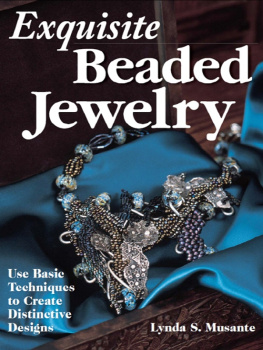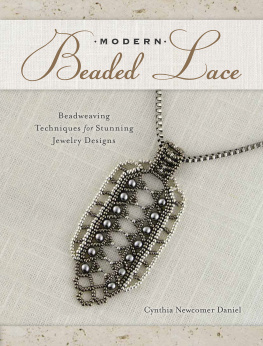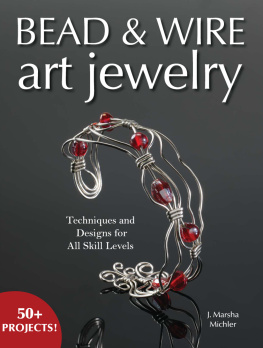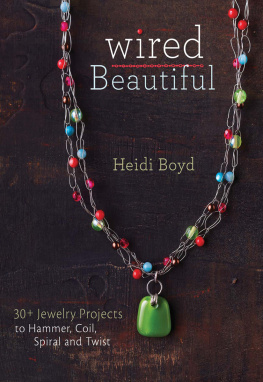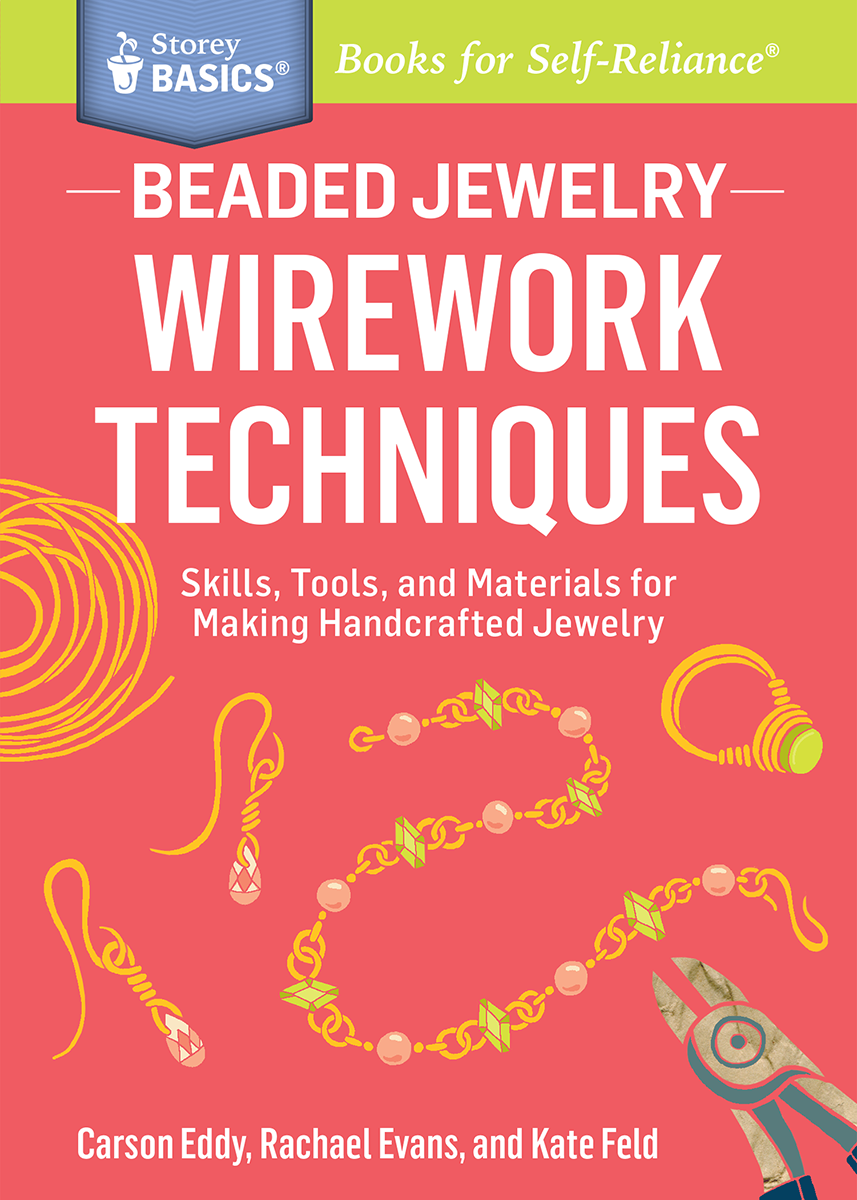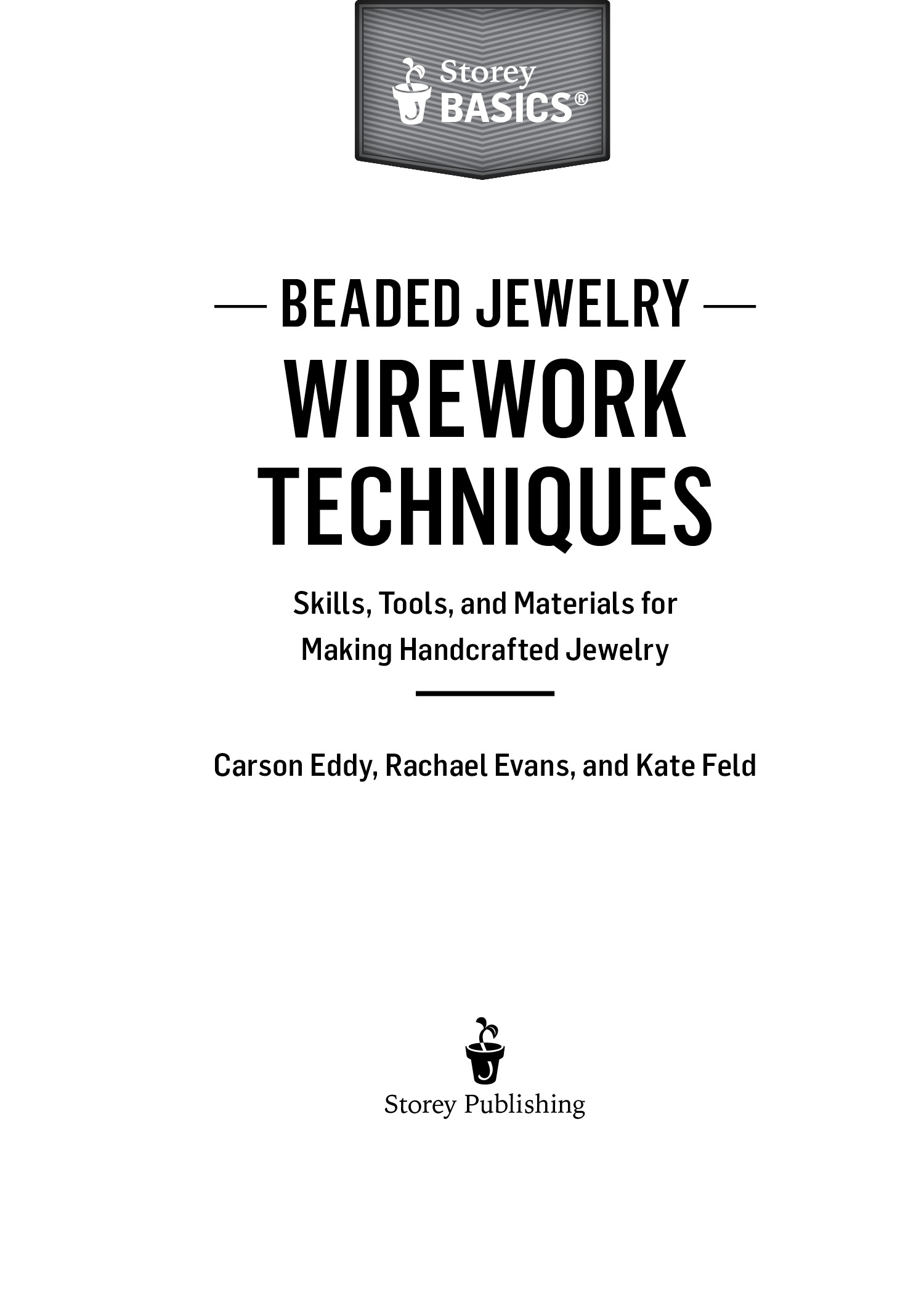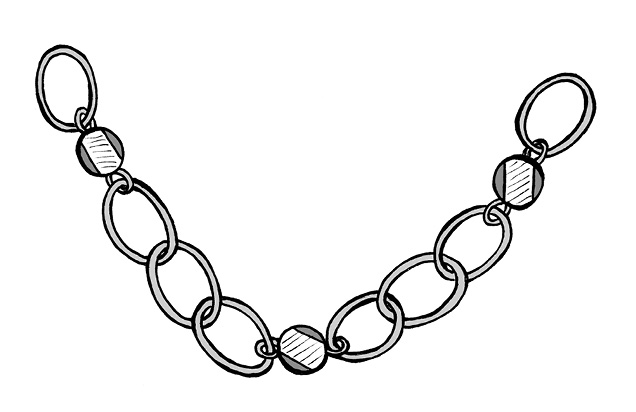We dedicate this book to our moms, who taught each of us a love of learning and a passion for creativity.
Metal is the foundation material for making wire, chain, and jewelry-making findings. Humans have been using metals in some way or another since the beginning of civilization. As long ago as 6000 bce, the Egyptians, followed by the Greeks and Romans, were making decorative objects and jewelry from gold. A basic understanding of metallurgy, the science of working and shaping metal, is useful for anyone interested in creating jewelry with these materials.
Metals are either elements or alloys. Elements are the basic building blocks of chemistry; metal elements are unique because they reflect light, are malleable, can be fused, and conduct heat and electricity. Naturally occurring metal elements in their pure form are generally not very useful because they are too soft, too hard, or too brittle. To be useful for jewelry making, metal elements with different qualities are combined to make more useful metal alloys.
Wire, chain, and jewelry-making findings come in a wide range of metals, gauges, and styles. A little assistance when shopping for wire and metal products can go a long way. Local bead shops, staffed by knowledgeable jewelry makers, are usually an excellent resource. Some alloys may contain metals that are known to cause allergies or to be carcinogenic, so shopping in person is always the best way to ensure that you get what you expect!
We hope you will find this book useful and keep it close at hand for many years to come.
A Word about Lead
Lead is worth mentioning in any discussion about jewelry metals. Traditionally, lead has been used as an ingredient in a number of alloys, as it makes an alloy more malleable and lowers its melting temperature. Today lead is known to contribute to a variety of health problems. State and local governments have begun to regulate the amount of lead permitted in products, especially jewelry products that may be handled by children. To date, California is the only state that also regulates lead content in adult jewelry.
Chapter one
Wire Basics
Wire is metal that has been stretched into long, thin, flexible filaments. It is an incredibly versatile material with a multitude of applications. Wire can be used to make structures, to link elements together, and to add decorative interest. Many types of wire are available in a full range of metals, sizes, shapes, and finishes, perfect for all kinds of jewelry-making projects.
Wire Types
When people begin making wire-based jewelry and findings, the question of wire type always arises. The kind of project being made and personal preference are generally the deciding factors. There are two types of wire used in jewelry making: flexible beading wire, which is used exclusively for stringing beads, and hard wire, which is used for wireworking. Each type of wire comes in a variety of diameters or gauges and colors; hard wire also comes in a variety of shapes.
Flexible Beading Wire
Flexible beading wire is one of the most popular materials used for stringing beaded jewelry. This strong but flexible, nylon-coated, stainless steel wire is secured to a clasp with crimp beads. Two popular brands of flexible beading wire are SoftFlex and Beadalon. These brands offer the highest-quality choices in a variety of diameters, flexibilities, and colors. In addition to the standard silver, gold, and metal colors, flexible beading wire comes in a range of seasonal colors, as well as black and white.
When selecting a flexible beading wire for a stringing project, it is best to select the thickest one that will comfortably fit through the beads being used. Different diameters of flexible beading wire are recommended for different sizes and weights of beads.
Very fine diameter (.010 to .013 inch) is best used with tiny, lightweight beads, gemstones, or pearls with very small drill holes. This diameter wire drapes nicely as long as the beads being used are light enough.
Fine diameter (.014 to .015 inch) is recommended for general-purpose stringing projects using light- to medium-weight beads. Seed beads, crystals, and Czech glass beads string and drape nicely on this diameter wire. Avoid using heavy beads with this diameter beading wire, as excess weight can pull the wire out of the crimps and lead to loss.
Medium diameter (.018 to .019 inch) is recommended for medium-weight beads, large glass beads, or stone beads, as well as for projects that need extra durability. This diameter of beading wire is very popular for bracelet and necklace projects that are worn frequently or that are made with larger or heavier beads.
Heavy diameter (.024 inch) is suggested for projects that get a lot of use, such as bracelets, lanyards, and eyeglass holders. This diameter wire works well with very large or heavy beads, including lampwork beads, African trade beads, and beads made from bone and stone. It is also appropriate for beads with large holes or holes that may be rough or abrasive.
Another variable to consider when selecting flexible beading wire is the number of strands of stainless steel from which a particular beading wire is made. The more strands this type of wire is made from, the sturdier and more flexible it will be. Beadalon produces a good-quality wire made with only seven strands of stainless steel. This wire is the least flexible option but is ideal for craft projects or childrens jewelry.
Both SoftFlex and Beadalon produce better-quality beading wires made with 19 or 21 strands of stainless steel. These beading wires are stronger and more flexible than 7-strand beading wire. Both brands of 19- and 21-strand beading wire are popular and cost effective for general purpose bead stringing, and they drape nicely when used with appropriately sized beads. The best-quality beading wires that SoftFlex and Beadalon produce are made with 49 strands of stainless steel. These beading wires are by far the strongest and most flexible, and withstand the most wear. They are highly recommended for working with valuable beads.
Hard Wire
Hard wire is the type of wire used for making wire-based jewelry and findings. It is most commonly used for wire wrapping, creating linked chain, and making wire-based findings. Hard wire is an amazing material to work with because it is fluid yet sturdy, soft yet hard, and creates a lovely finished product.
There are three types of hard wire used in wireworking: precious metal wire, base metal wire, and memory wire. It is important to consider the attributes of each type of hard wire when selecting one to work with. Things to consider include material (metal type), temper (hardness), diameter (gauge), and shape. The following pages explore these attributes. For a descriptive list of metal types, see the .
Precious Metal Wires
Precious metal wires produce both beautiful and valuable pieces of jewelry. These wires may be the most expensive, but they produce the best results and should always be used when making heirloom or keepsake jewelry. Karat gold and fine or sterling silver are the most popular precious metal wires for making wire jewelry and components. Each type of precious metal wire comes in a range of tempers, gauges, and shapes.


